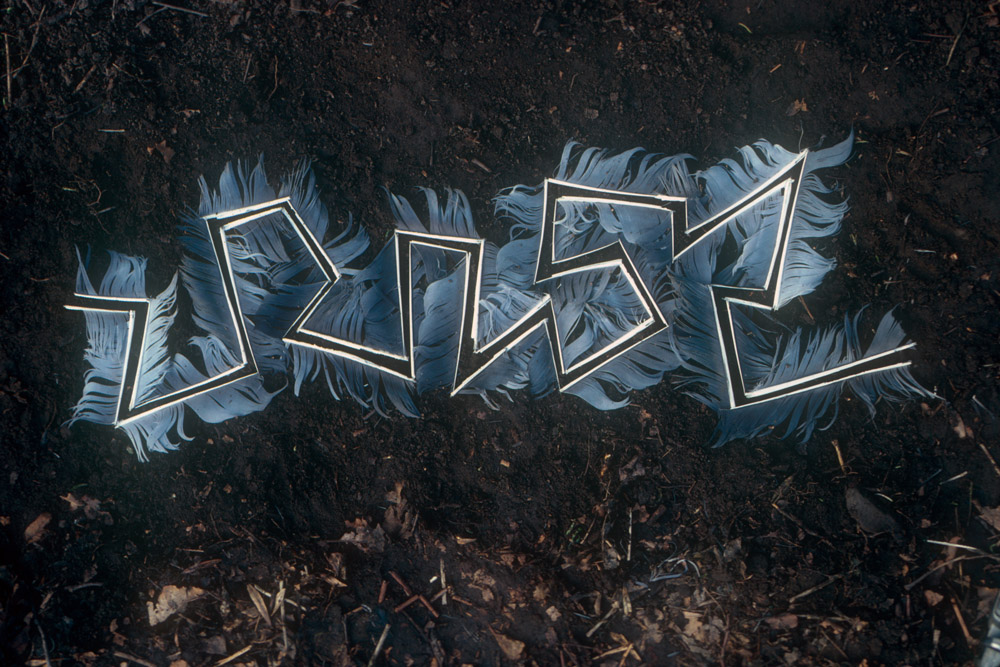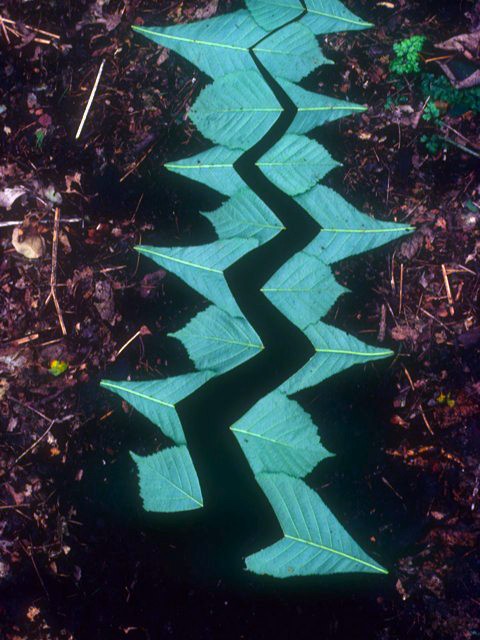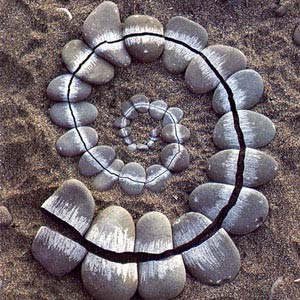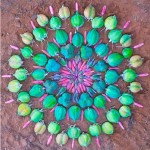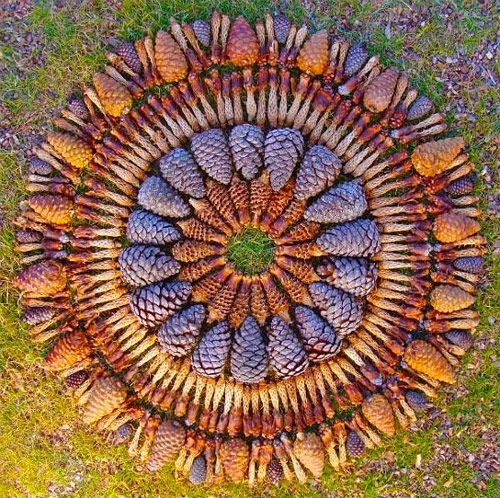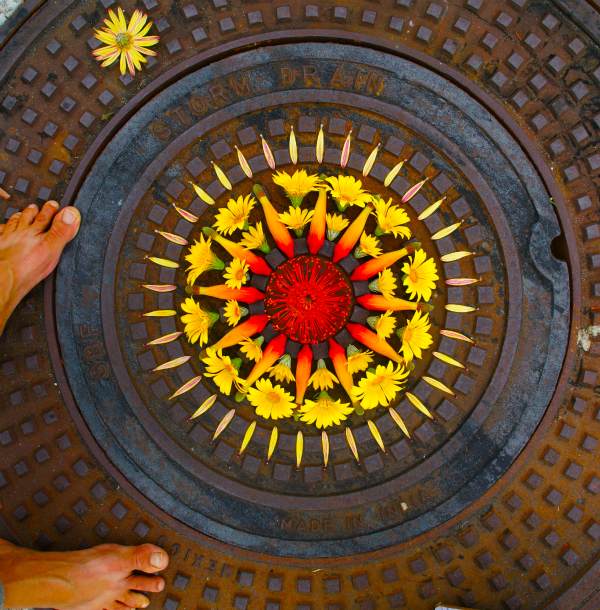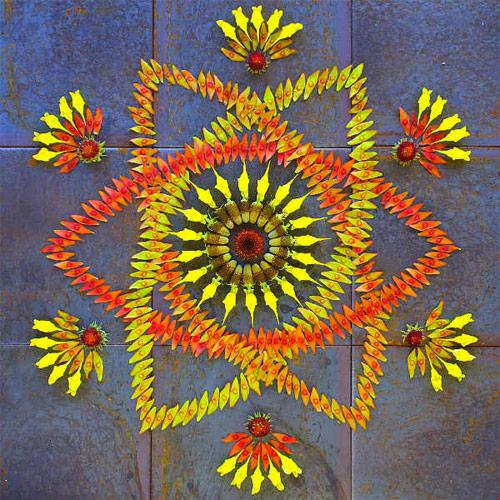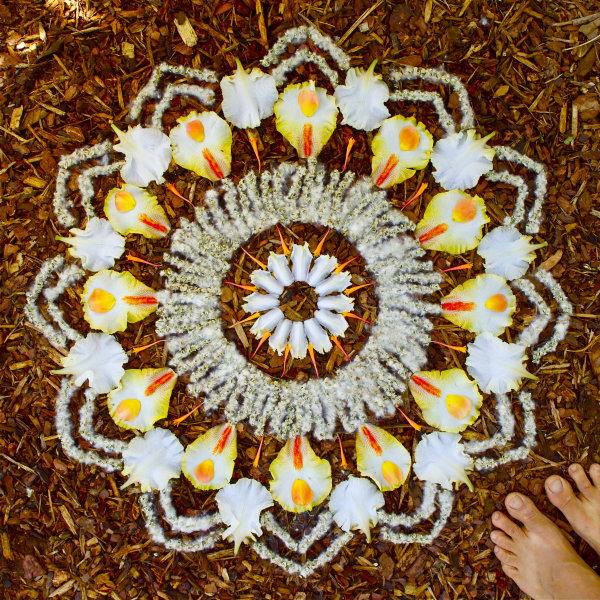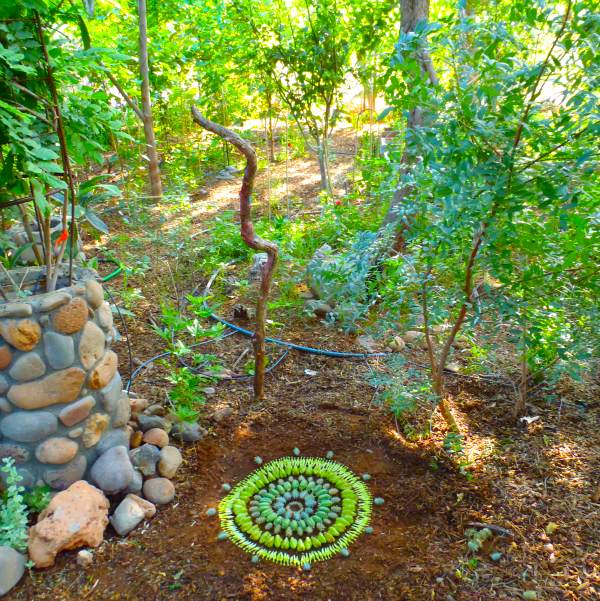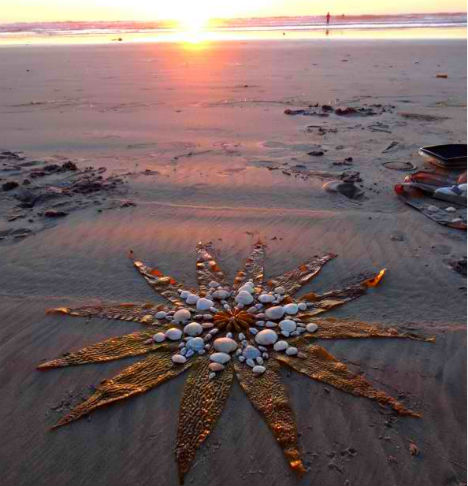Engaging in outdoor art-making since the 1970s, Andy Goldsworthy is the most well-known environmental artist of our time. Decades of practice have nurtured a humble and sensitive attention to form, light, color, condition, and temporality. His works range from delicate and transitory arrangements to massive, sturdy installations. Like many land artists, he uses only natural materials found at the site of construction, foregoing the use of glue, rope, or other manmade tools with the intent to gain an understanding of the natural material’s intrinsic qualities. Through the manipulation of leaves, sticks, stones, dirt, feathers, and even icicles, Goldsworthy dazzles us with stunning beauty and demands an appreciation of nature’s own creations.
Most notable, perhaps is the inherent temporal nature of his installations. Goldsworthy taps into nature’s uncertainty, and this tension is present in his works. Much like Money and the impressionist, Goldsworthy pays close attention to the way sunlight falls on objects or the way wind may animate leaves. “I have become aware of how nature is in a state of change and how that change is the key to understanding. I want my art to be sensitive and alert to changes in material, season and weather… My sculpture can last for days or a few seconds – what is important for me is the experience of making. I leave all my work outside and often return to watch it decay” (Andy Goldsworthy Digital Catalogue: Selected Extracts).
Goldsworthy’s use of photography is an important aspect of his practice. Beginning strictly as a documentary practice, his photography evolved into a means of capturing, archiving, and sharing his temporal pieces. “It is well known that every ephemeral work that Goldsworthy has made is invariably photographed, always immediately following the making, and often in revisiting the work. He has described the process of photography as one that is ‘routine’ and ‘demanding.’ Certainly in terms of the setting up, timing, viewing, and awareness that it requires of Goldsworthy, the photographing process constitutes a performative corollary to the making of the sculpture” (Andy Goldsworthy : Digital Catalogue). Goldsworthy takes all the photographs himself, using three separate cameras, and regular lenses with no filters. He prefers maximum depth of field and brackets his exposures to produce the greatest range of quality and ensure the influences of the constantly fluctuating environment are not overlooked. “If the work is one that is ‘activated’ by a particular type of lighting, or by the flow of water or incoming tide for instance, or is ‘time-based’, then Goldsworthy will take multiple successive shots, usually framed from the same vantage point” (Andy Goldsworthy Digital Catalogue : Photography). Goldsworthy utilizes the photographic evidence of his work as a means of reflection, to reassess the piece and inform future projects.
Since much of Goldsworthy’s sculptures and installations are created in private or remote areas, and begin to fade away the before they are even complete, the photographic renderings of his work are often the only manifestation of his genius that the public is blessed to experience. Through exhibitions or published images, Goldsworthy mediates the accessibility to his work by which pieces are chosen to be printed and the manner in which the piece is photographed and ultimately viewed. I personally consider these photographs as incredible gifts; the probability that I will ever be present in the moment of a Goldsworthy creation is rare, so their photographic likeness fixed in time is a blessing.
The Andy Goldsworthy Digital Catalogue is an extensive archive of his work. This incredible resources is a collaborative effort between Andy Goldsworthy, The Crichton Foundation, and the University of Glasgow’s Crichton Campus and Humanities Advanced Technology and Information Institute (HATII). Documenting over 2700 of Goldsworthy’s scultpures during a ten year period (1976-1986), the result is unprecedented access to his portfolio and sketchbook diaries, as well as several interviews and reflections on specific pieces. Users may search works by date, form, material, and place, and view quality images of the installations, which only existed for a brief moment in time.
To learn more about Andy Goldsworthy and his incredible work, check out Rivers and Tides, a moving documentary that paints a portrait of the artist and his work. The first movie allowed to be made of his process, Director Thomas Riedelsheimer takes us on a journey through four countries, across four seasons, and reveals the unpredictability of Goldsworthy’s elusive process.
Works by Goldsworthy:
Feathers plucked from dead heron, cut with sharp stone, stripped down one side // About three-and-a-half feet overall length // Made over three calm days, cold mornings, frost // smell from heron becoming pungent as each day warmed up // Swindale Beck Wood, Cumbria // 24- 26 February 1982
Partly stripped sycamore twigs // Ilkley, Yorkshire // April 1978
Stacked icicles, about 8 inches in length // Morecambe Bay, Lancashire // February 1978
Sycamore leaves, stitched together with stalks, hung from a tree // Glasgow, Lanarkshire // 1 November 1986
